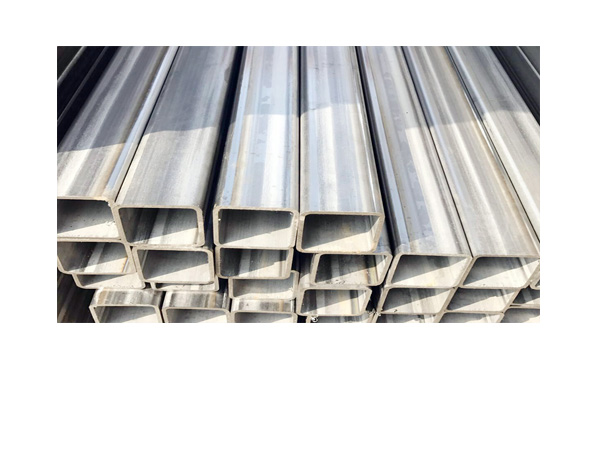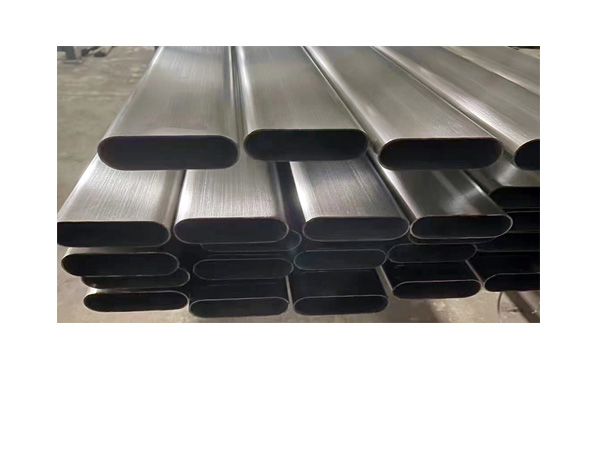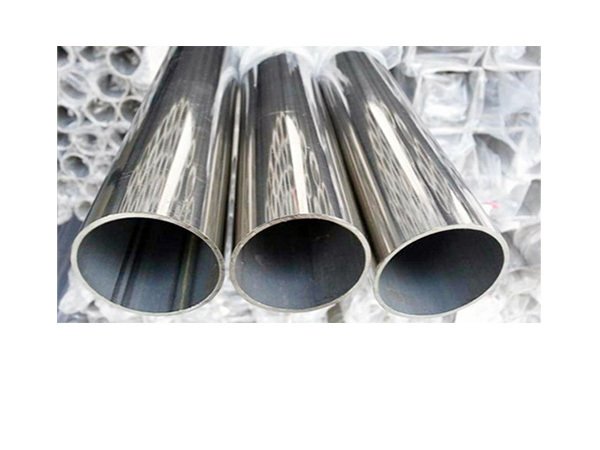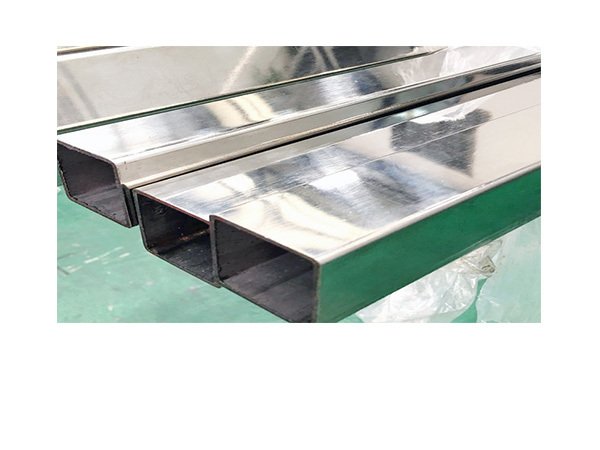不锈钢矩管规格表
很高兴能够参与这个不锈钢矩管规格/a问题的解答工作。我将自己的知识和经验,为每个问题提供准确而有用的回答,并尽量满足大家的需求。
文章目录列表:
1.A312标准和A276标准有什么不一样2.方管尺寸规格表图
3.不锈钢管规格是多少 不锈钢管分类标准

A312标准和A276标准有什么不一样
ASTM A312 / A312M - 09 Standard Specification for Seamless, Welded, and Heavily Cold Worked Austenitic Stainless Steel Pipes
ASTM A312 / A312M
Abstract
This guide covers standard specification for seamless, straight-seam welded, and cold worked welded austenitic stainless steel pipe intended for high-temperature and general corrosive service. Several grades of steel shall conform to the required chemical composition for carbon, manganese, phosphorus, sulfur, silicon, chromium, nickel, molybdenum, titanium, columbium, tantalum, nitrogen, vanadium, copper, cerium, boron, aluminum, and others. All pipes shall be furnished in the heat-treated condition in accordance with the required heat treating temperature and cooling/testing requirements. Tensile properties of the material shall conform to the prescribed tensile strength and yield strength. The steel pipe shall undergo mechanical tests such as transverse or longitudinal tension test and flattening test. Grain size determination and weld decay tests shall be performed. Each pipe shall also be subjected to the nondestructive electric test or the hydrostatic test.
This abstract is a brief summary of the referenced standard. It is informational only and not an official part of the standard; the full tet of the standard itself must be referred to for its use and application. ASTM does not give any warranty epress or implied or make any representation that the contents of this abstract are accurate, complete or up to date.
1. Scope
1.1 This specification covers seamless, straight-seam welded, and heavily cold worked welded austenitic stainless steel pipe intended for high-temperature and general corrosive service.
Note 1—When the impact test criterion for a low-temperature service would be 15 ft·lbf [20 J] energy absorption or 15 mils [0.38 mm] lateral epansion, some of the austenitic stainless steel grades covered by this specification are accepted by certain pressure vessel or piping codes without the necessity of making the actual test. For eample, Grades TP304, TP304L, and TP347 are accepted by the AE Pressure Vessel Code, Section VIII Division 1, and by the Chemical Plant and Refinery Piping Code, ANSI B31.3, for service at temperatures as low as ?425 °F [?250 °C] without qualification by impact tests. Other AISI stainless steel grades are usually accepted for service temperatures as low as ?325 °F [?200 °C] without impact testing. Impact testing may, under certain circumstances, be required. For eample, materials with chromium or nickel content outside the AISI ranges, and for material with carbon content eceeding 0.10 %, are required to be impact tested under the rules of AE Section VIII Division 1 when service temperatures are lower than ?50 °F [?45 °C].
1.2 Grades TP304H, TP309H, TP309HCb, TP310H, TP310HCb, TP316H, TP321H, TP347H, and TP348H are modifications of Grades TP304, TP309Cb, TP309S, TP310Cb, TP310S, TP316, TP321, TP347, and TP348, and are intended for service at temperatures where creep and stress rupture properties are important.
1.3 Optional supplementary requirements are provided for pipe where a greater degree of testing is desired. These supplementary requirements call for additional tests to be made and, when desired, it is permitted to specify in the order one or more of these supplementary requirements.
1.4 Table X1.1 lists the standardized dimensions of welded and seamless stainless steel pipe as shown in ANSI B36.19. These dimensions are also applicable to heavily cold worked pipe. Pipe having other dimensions is permitted to be ordered and furnished provided such pipe complies with all other requirements of this specification.
1.5 Grades TP321 and TP321H have lower strength requirements for pipe manufactured by the seamless process in nominal wall thicknesses greater than 3/8 in. [9.5 mm].
1.6 The values stated in either SI units or inch-pound units are to be regarded separately as standard. Within the tet, the SI units are shown in brackets. The values stated in each system may not be eact equivalents; therefore, each system shall be used independently of the other. Combining values from the two systems may result in non-conformance with the standard. The inch-pound units shall apply unless the “M” designation of this specification is specified in the order.
Note 2—The dimensionless designator NPS (nominal pipe size) has been substituted in this standard for such traditional terms as “nominal diameter,” “size,” and “nominal size.”
2. Referenced Documents
ASTM Standards
A1016/A1016M Specification for General Requirements for Ferritic Alloy Steel, Austenitic Alloy Steel, and Stainless Steel Tubes
A262 Practices for Detecting Susceptibility to Intergranular Attack in Austenitic Stainless Steels
A370 Test Methods and Definitions for Mechanical Testing of Steel Products
A941 Terminology Relating to Steel, Stainless Steel, Related Alloys, and Ferroalloys
A999/A999M Specification for General Requirements for Alloy and Stainless Steel Pipe
E112 Test Methods for Determining Average Grain Size
E381 Method of Macroetch Testing Steel Bars, Billets, Blooms, and Forgings
E527 Practice for Numbering Metals and Alloys in the Unified Numbering System (UNS)
ANSI Standards
B36.19 Stainless Steel Pipe
AE Standard
AEBoilerandPressureVesselCode : Section VIII
AWS Standard
A5.9 Corrosion-Resisting Chromium and Chromium-Nickel Steel Welding Rods and Electrodes
Other Standard
SAEJ1086 Practice for Numbering Metals and Alloys (UNS)
--------------------------------------------------------------------------------
Inde Terms
austenitic stainless steel; seamless steel pipe; stainless steel pipe; steel pipe; welded steel pipe; Austenitic stainless steel pipe--specifications; Seamless austenitic steel pipe--specifications; Stainless steel pipe--specifications; Welded steel pipe--specifications; ICS Number Code 23.040.10 (Iron and steel pipes)
--------------------------------------------------------------------------------
ASTM A276 - 08a Standard Specification for Stainless Steel Bars and Shapes
ASTM A276
Abstract
This specification covers hot-finished or cold-finished bars ecept bars for reforging. It includes rounds, squares, and heagons, and hot-rolled or etruded shapes, such as angles, tees, and channels in the more commonly used types of stainless steels. The bars shall be furnished in one of the following conditions: Condition A in which the bars are annealed, Condition H in which the bars are hardened and tempered at a relative temperature, Condition T in which the bars are hardened and tempered at a relatively high temperature, Condition S in which the bars are strain hardened or relatively light cold worked, and Condition B in which the bars are relatively severe cold worked. The material shall be subjected to a mechanical test to determine its tensile strength, yield strength, elongation, and Brinell hardness.
This abstract is a brief summary of the referenced standard. It is informational only and not an official part of the standard; the full tet of the standard itself must be referred to for its use and application. ASTM does not give any warranty epress or implied or make any representation that the contents of this abstract are accurate, complete or up to date.
1. Scope
1.1 This specification covers hot-finished or cold-finished bars ecept bars for reforging (Note 1). It includes rounds, squares, and heagons, and hot-rolled or etruded shapes, such as angles, tees, and channels in the more commonly used types of stainless steels. The free-machining types (Note 2) for general corrosion resistance and high-temperature service are covered in a separate specification.
Note 1—For bars for reforging, see Specification A 314.
Note 2—For free-machining stainless bars designed especially for optimum machinability, see Specification A 582/A 582M.
Note 3—There are standards covering high nickel, chromium, austenitic corrosion, and heat resisting alloy materials. These standards are under the jurisdiction of ASTM Subcommittee B02.07 and may be found in Annual Book of ASTM Standards, Vol. 02.04.
1.2 The values stated in inch-pound units are to be regarded as standard. The values given in parentheses are mathematical conversions to SI units that are provided for information only and are not considered standard.
2. Referenced Documents
ASTM Standards
A314 Specification for Stainless Steel Billets and Bars for Forging
A370 Test Methods and Definitions for Mechanical Testing of Steel Products
A484/A484M Specification for General Requirements for Stainless Steel Bars, Billets, and Forgings
A582/A582M Specification for Free-Machining Stainless Steel Bars
A751 Test Methods, Practices, and Terminology for Chemical Analysis of Steel Products
E527 Practice for Numbering Metals and Alloys in the Unified Numbering System (UNS)
SAE Document
--------------------------------------------------------------------------------
Inde Terms
austenitic stainless steel; austenitic-ferritic duple stainless steel; ferritic stainless steel; martensitic stainless steel; stainless steel bars; stainless steel shapes; Hot-rolled stainless steel bars--specifications; Stainless steel bars/billets--specifications; Steel bars and shapes--specifications; ICS Number Code 77.140.20 (Steels of high quality); 77.140.60 (Steel bars and rods); 77.140.70 (Steel profiles)
方管尺寸规格表图
品名 规格 品名 规格 品名 规格 热镀锌矩管 20*30*2.0 冷镀锌矩管 10*20*2 热镀锌矩管 40*80*6 热镀锌矩管 20*40*3.0 冷镀锌矩管 20*40*2.0 热镀锌矩管 40*30*3.0 热镀锌矩管 30*50*2.5 冷镀锌矩管 30*50*3.0 热镀锌矩管 50*40*4.0 热镀锌矩管 40*60*5.0 冷镀锌矩管 40*80*3.0 热镀锌矩管 100*200*8 热镀锌矩管 60*80*4.0 冷镀锌矩管 100*150*6.0 热镀锌矩管 150*250*10 热镀锌矩管 50*100*3.0 冷镀锌矩管 70*140*4.5 热镀锌矩管 200*300*12 热镀锌矩管 100*120*6.0 冷镀锌矩管 80*160*6.0 热镀锌矩管 300*400*12
不锈钢管规格是多少 不锈钢管分类标准
常年生产; 方管? 方矩管? 无缝方管 冷拔方管? 冷拔方矩管? 冷拉方管
方管 20*20 1.3-2.5 20*301.3-2.75 25*251.3-2.75 20*40?1.3-2.75
方管 30*30 1.3-2.75 25*401.3-2.75 40*401.3-3.75 30*50?1.3-4.75
方管 50*50 1.3-5.75 30*601.3-4.75 60*601.3-5.75 40*50?1.3-4.75
方管 70*70 1.3-5.75 40*801.3-4.75 80*801.3-5.75 50*70?1.3-4.75
方管 90*90 1.3-5.75 50*801.3-4.75 100*1001.5-12.0 60*90?1.3-4.75
方管 120*120 2.5-12.0 50*1001.3-5.75 140*140 2.75-16.0 50*150 1.3-5.75
方管 150*150 2.75-16.0 60*1601.3-5.75 160*160 3.0-16.0 100*150 2.5-16.0
方管 180*180 3.0-16.0 100*200 2.5-16.0 200*200 3.0-16.0 100*2502.5-16.0
方管 250*250 4.75-16.0 150*300 4.5-16.0 300*300 4.75-16.0 200*300 ?5.5-16.0
方管 400*400 4.75-16.0 200*400 5.5-16.0 500*500 4.75-16.0 400*6005.5-16.0
?#汽车制造配管 ?#军工 ?#工程机械 ?#铁路机车 ?#航空航天 ?#船舶 ?#注塑机 ?#压铸机 ?#机床加工 ?#柴油机 ?#石油化工 ?#电站 ?#锅炉设备
国内大部分地区 方管 方矩管 等钢管价格惯性下调,在受到主导钢厂纷纷下调出厂价的影响下,各地现货市场价格竞相下调,不断刷新价格。 从市场成交方面,因终端工地、用材加工厂等的影响,钢管交易表现偏弱,需求降低,市场采购量低位徘徊。不过临近清明假期,部分厂家对管材方面有备货需求,整体成交环比昨日小幅上升。近期利空消息较为集中,期货市场跌势汹汹,现货成交低迷,市场悲观情绪加重,预计短期国内方管等钢管市场将延续弱势运行。
不锈钢管在的生活中的用途非常广泛,在的生活中的作用是非常重要的,不锈钢管的规格是多少呢,下面就一起了解一下吧。
不锈钢管规格是多少
不锈钢管分类标准
4-1分级分类:
(1)国家标准GB;
(2)行业标准YB;
(3)地方标准;
(4)企业标准Q/CB。
4-2分类:
(1)产品标准;
(2)包装标准;
(3)标准;
(4)基础标准。
不锈钢管种类
按断面形状分类:
(1)圆形钢管;
(2)矩形管。
按壁厚分类——薄壁钢管、厚壁钢管
按用途分类:
(1)民用管分圆管、矩管、花管,一般用于装饰、建筑、结构等方面;
(2)工业管:工业配管用钢管、一般配管用钢管(饮用水管)、机械构造/流体输送管、锅炉热交换管、食品卫生管等。一般应用于工业的很多地方如:石油化工、造纸、核能、食品、饮料、医药等行业对流体介质要求较高管道。
今天关于“不锈钢矩管规格/a”的讨论就到这里了。希望通过今天的讲解,您能对这个主题有更深入的理解。您有任何问题或需要进一步的信息,请随时告诉我。我将竭诚为您服务。
-
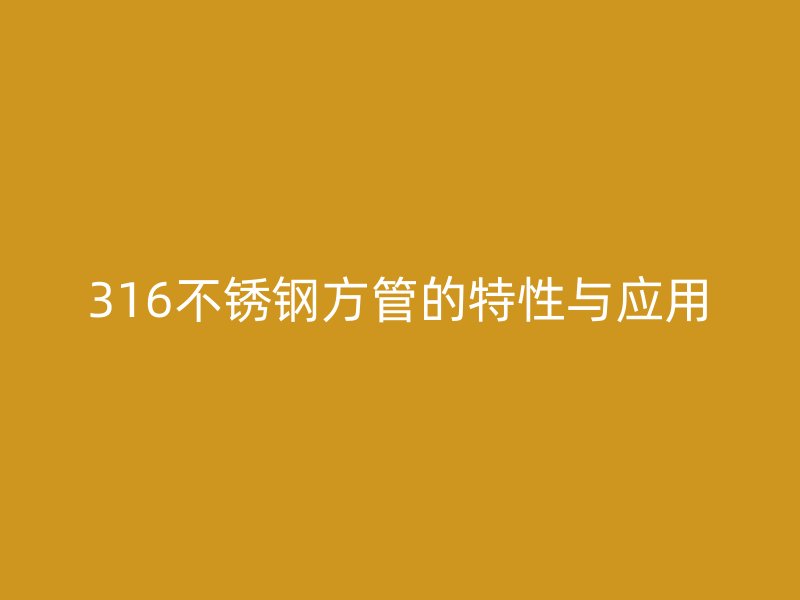 316不锈钢方管的特性与应用2025-26-12
316不锈钢方管的特性与应用2025-26-12 -
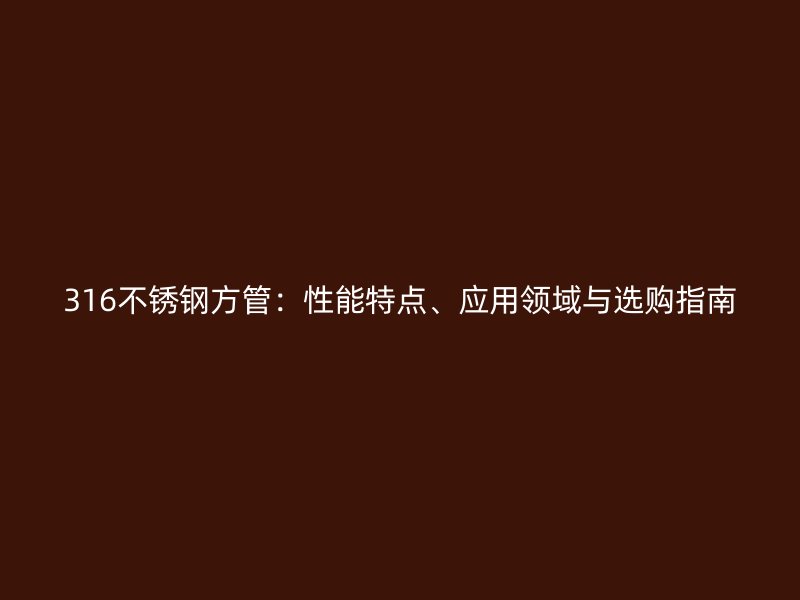 316不锈钢方管:性能特点、应用领域与选购指南2025-26-12
316不锈钢方管:性能特点、应用领域与选购指南2025-26-12 -
 316不锈钢无缝管介绍及特性解析2025-26-12
316不锈钢无缝管介绍及特性解析2025-26-12 -
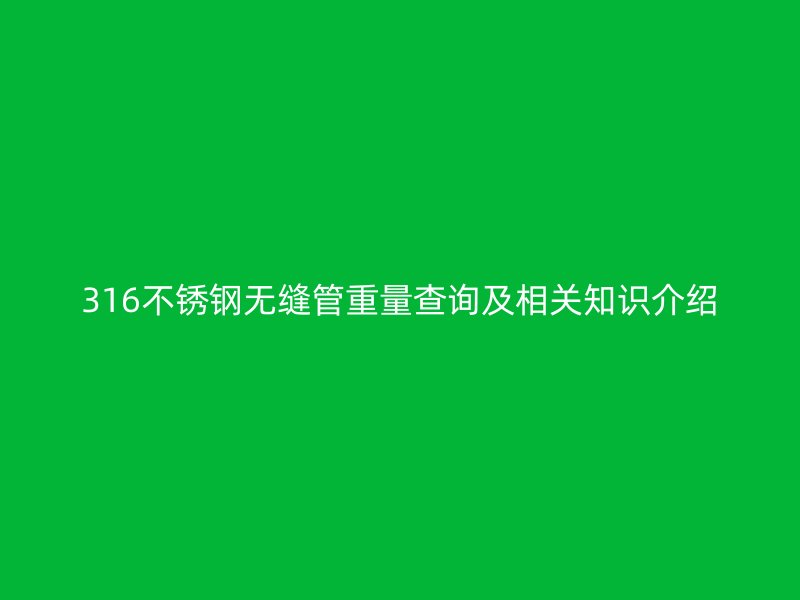 316不锈钢无缝管重量查询及相关知识介绍2025-26-12
316不锈钢无缝管重量查询及相关知识介绍2025-26-12 -
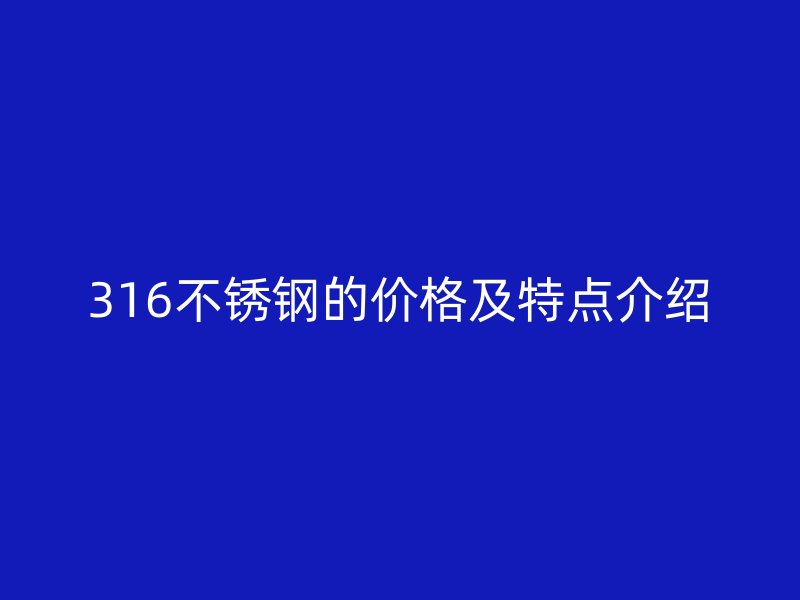 316不锈钢的价格及特点介绍2025-26-12
316不锈钢的价格及特点介绍2025-26-12 -
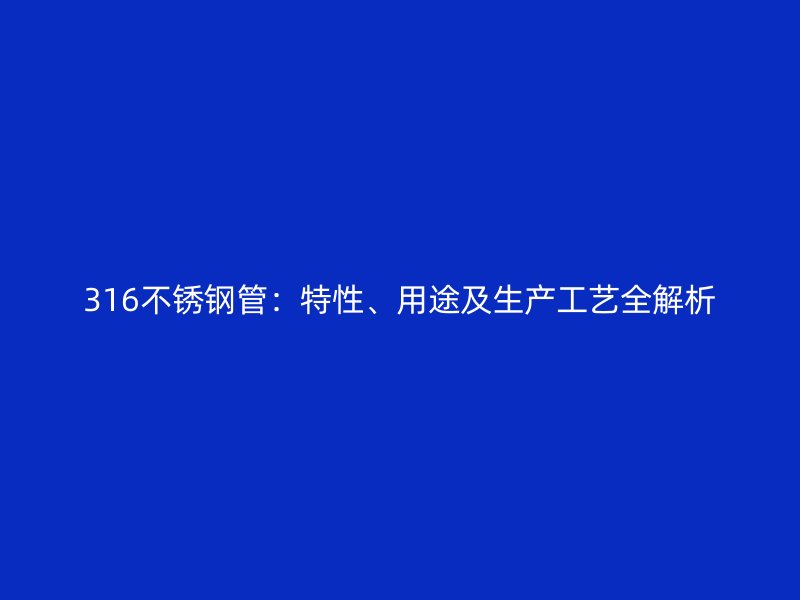 316不锈钢管:特性、用途及生产工艺全解析2025-26-12
316不锈钢管:特性、用途及生产工艺全解析2025-26-12 -
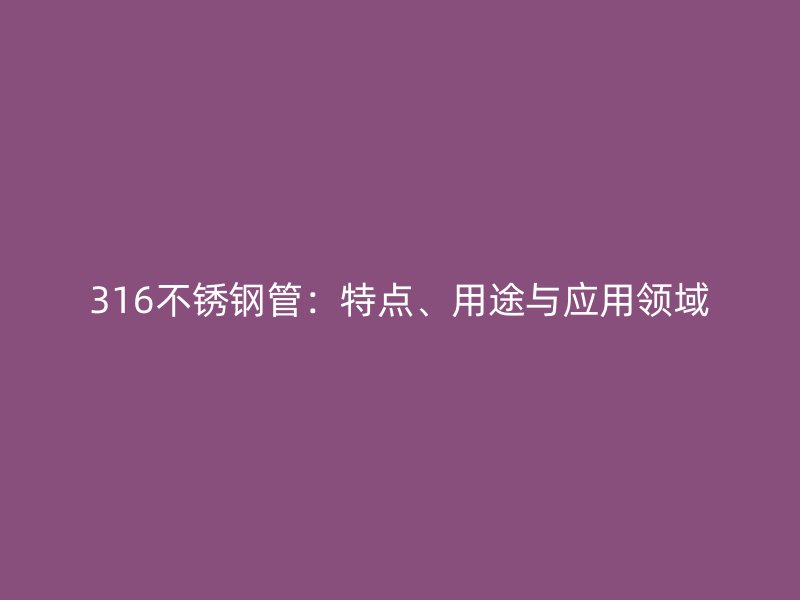 316不锈钢管:特点、用途与应用领域2025-26-12
316不锈钢管:特点、用途与应用领域2025-26-12 -
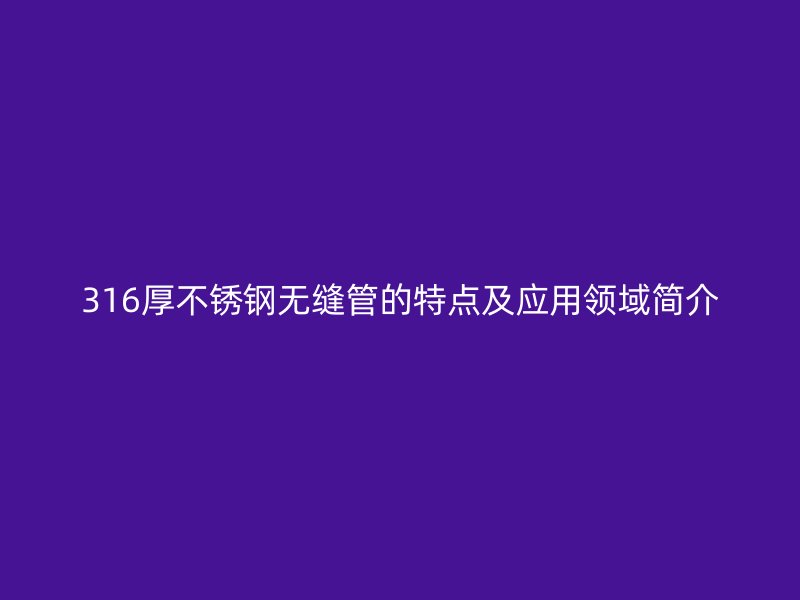 316厚不锈钢无缝管的特点及应用领域简介2025-26-12
316厚不锈钢无缝管的特点及应用领域简介2025-26-12 -
 321不锈钢无缝管加工厂:了解无缝管的加工工艺与应用2025-26-12
321不锈钢无缝管加工厂:了解无缝管的加工工艺与应用2025-26-12 -
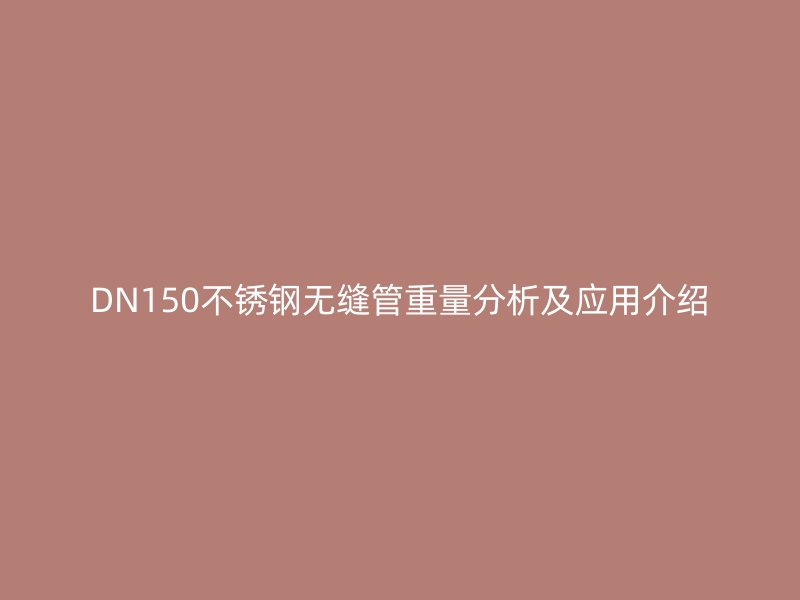 DN150不锈钢无缝管重量分析及应用介绍2025-26-12
DN150不锈钢无缝管重量分析及应用介绍2025-26-12



